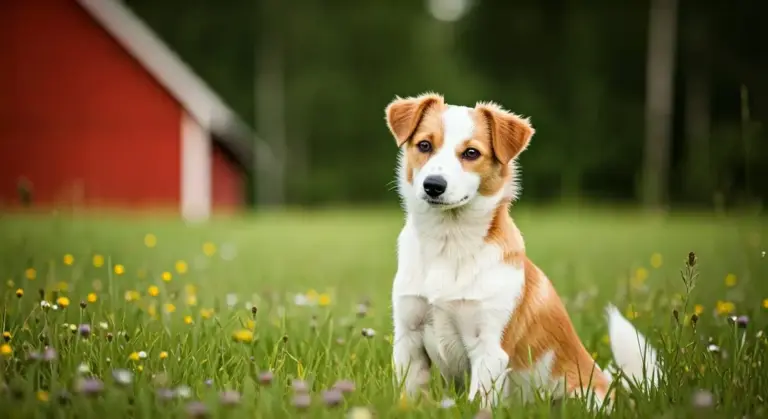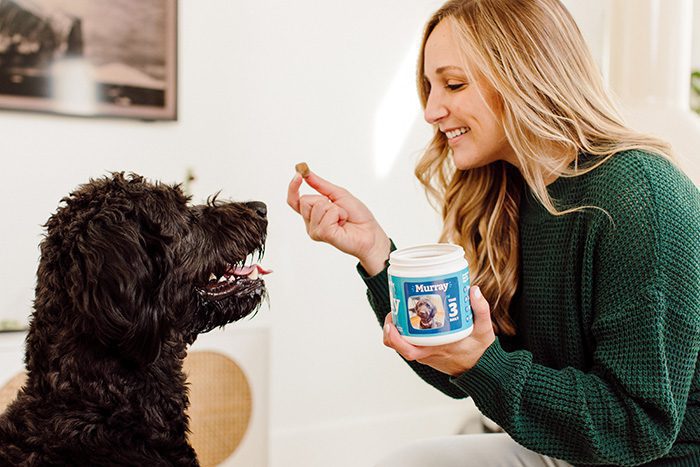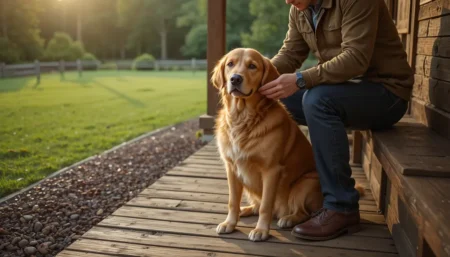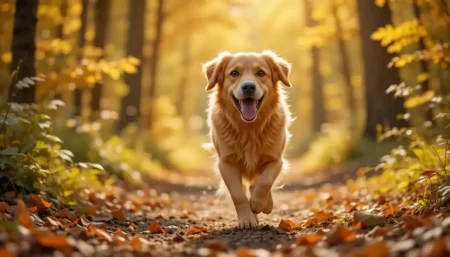Danish‑Swedish Farmdog is a small‑to‑medium, high‑energy breed known for its agility, loyalty, and keen intelligence. Ideal for active families, they thrive on daily exercise, love outdoor tasks, and adapt well to varied living spaces. Whether you’re a weekend hiker, a dog‑sport enthusiast, or simply love a lively companion, the Danish‑Swedish Farmdog could be the perfect match.
Read on to discover how to meet their needs and enjoy a rewarding partnership.
History and Origin of the Danish‑Swedish Farmdog
The Danish‑Swedish Farmdog traces its roots to the rural farms of Scandinavia, where it was prized for versatility and endurance. Long before formal breed standards existed, farmers in Denmark and Sweden relied on these compact working dogs to control vermin, herd small livestock, and guard homesteads.
Throughout the 1800s, the breed was cross‑bred with local spitz‑type dogs, creating a sturdy, alert companion capable of handling harsh weather. By the early 20th century, organized enthusiasts formed the first breed clubs, documenting the dog’s traits and pushing for official recognition.
Key milestones in the breed’s development:
| Year | Milestone |
|---|---|
| 1850 | Early farm records mention “farm dogs” used for ratting and herding |
| 1915 | First informal breed society established in southern Sweden |
| 1945 | Danish‑Swedish Farmdog registered with the Danish Kennel Club |
| 1970 | Breed standard approved by the Swedish Kennel Club |
| 1998 | International recognition by the Fédération Cynologique Internationale (FCI) |
| 2005 | Revival of farm‑dog programs promoting field work and agility |
Today, the Danish‑Swedish Farmdog enjoys a renewed popularity among active owners who value its working‑dog heritage and friendly disposition.

Physical Characteristics of the Danish‑Swedish Farmdog
The Danish‑Swedish Farmdog is a compact, well‑balanced dog built for stamina rather than size. Males typically stand 13–15 inches (33–38 cm) at the shoulder, while females are slightly smaller at 12–14 inches (30–36 cm). Their weight ranges from 15–25 lb (7–11 kg), giving them a sturdy yet agile frame.
| Measurement | Range |
|---|---|
| Height (male) | 13–15 in (33–38 cm) |
| Height (female) | 12–14 in (30–36 cm) |
| Weight | 15–25 lb (7–11 kg) |
| Lifespan | 12–15 years |
Coat and Color – The breed sports a double coat: a dense, weather‑resistant outer layer over a soft undercoat. Coat colors include sable, black, brown, or a blend of white with tan markings. Some dogs display a “wolf‑gray” pattern, especially in colder climates.
Head and Ears – The head is wedge‑shaped with a well‑defined stop. Ears are carried semi‑erect, folding forward at the tip, which gives the dog an alert expression.
Tail – The tail is thick at the base, carried high when the dog is excited, and may curl over the back in a gentle, sweeping motion.
These physical traits make the Danish‑Swedish Farmdog well‑suited for active pursuits, while the manageable size fits comfortably in most homes.
Temperament and Personality of the Danish‑Swedish Farmdog
The Danish‑Swedish Farmdog is celebrated for a temperament that blends enthusiasm with a gentle heart. Its lively spirit makes it an eager participant in family activities, yet it remains sensitive to the tone of its owner’s voice.
Key personality traits include:
- High Energy – Always ready for the next walk, hike, or game of fetch.
- Intelligence – Learns new commands quickly and enjoys problem‑solving games.
- Loyalty – Forms strong bonds with its primary family and often follows them from room to room.
- Alertness – Serves as an effective watchdog without being overly aggressive.
- Playfulness – Retains a puppy‑like enthusiasm well into adulthood.
Because of this mix of traits, the Danish‑Swedish Farmdog thrives when given a purpose—whether that’s a structured training session, a family sport, or a simple puzzle toy. When mental and physical needs are met, the breed is known for being calm and affectionate at home.
Exercise Requirements & Why It Suits Active Lives
An active lifestyle is the lifeblood of the Danish‑Swedish Farmdog. Without adequate exercise, the breed may become restless or develop unwanted habits. The following routine keeps the dog fit, happy, and well‑behaved:
- Morning Brisk Walk (30 min) – A fast‑paced walk on varied terrain stimulates both mind and muscles.
- Interactive Play (15 min) – Games such as fetch, tug‑of‑war, or frisbee tap into the dog’s natural chase instinct.
- Agility or Obedience Training (20 min, 3×/week) – Structured sessions teach focus and provide mental stimulation.
- Weekend Hike or Trail Run (1–2 hrs) – Longer outings satisfy the breed’s endurance and love of the outdoors.
- Free‑Run Time in a Secure Yard (Daily) – Allowing the dog to explore, sniff, and sprint safely rounds out daily activity.
These activities not only meet the breed’s physical needs but also reinforce the strong bond between dog and owner—an essential factor for families that enjoy outdoor adventures together.

Training, Intelligence, and Problem‑Solving
Training a Danish‑Swedish Farmdog is a rewarding experience, thanks to its eagerness to learn and natural problem‑solving ability. Consistent, positive reinforcement works best; harsh corrections can dampen the breed’s enthusiasm.
Helpful training tips:
- Start Early – Begin basic commands and house‑training at 8 weeks to establish good habits.
- Use High‑Value Rewards – Small pieces of cooked chicken, cheese, or commercial training treats keep motivation high.
- Keep Sessions Short – 5‑to‑10‑minute sessions maintain focus and prevent boredom.
- Incorporate Games – Puzzle toys, hide‑and‑seek, and scent trails turn learning into play.
- Gradual Distractions – Progress from a quiet room to a busy park, teaching reliability in any environment.
Because the Danish‑Swedish Farmdog enjoys challenges, consider enrolling in dog sports such as rally obedience, flyball, or tracking. These activities sharpen mental acuity, improve obedience, and provide an excellent outlet for the breed’s natural curiosity.
Socialization and Compatibility with Children and Other Pets
A well‑socialized Danish‑Swedish Farmdog easily fits into multi‑pet households and active families. Proper early exposure creates a confident, friendly dog that respects boundaries while staying enthusiastic.
Guidelines for successful socialization:
- Puppy Classes – Group classes introduce the dog to other puppies and people in a controlled setting.
- Controlled Introductions – Use leashes and positive reinforcement when meeting cats, small animals, or unfamiliar dogs.
- Supervised Play with Kids – Teach children to handle the dog gently; supervise all interactions until trust is established.
- Gradual Noise Exposure – Play recordings of traffic, fireworks, or household appliances to reduce fear responses.
When socialized correctly, the Danish‑Swedish Farmdog is known for being gentle with children, tolerant of other pets, and eager to join family activities. Its protective instinct is balanced by a friendly disposition, making it an ideal companion for active households.
Danish‑Swedish Farmdog Health and Longevity
Overall, the Danish‑Swedish Farmdog enjoys a robust constitution and a lifespan of 12–15 years when given proper care. Like any breed, it can be predisposed to a few hereditary conditions that owners should monitor.
Common health concerns:
- Hip Dysplasia – Joint laxity that may cause arthritis; regular exercise and weight control help mitigate risk.
- Patellar Luxation – Dislocation of the kneecap, often manageable with physical therapy or surgery if severe.
- Progressive Retinal Atrophy (PRA) – A hereditary eye disorder leading to vision loss; early screening is essential.
- Allergies – Food or environmental allergies may cause skin irritation; hypoallergenic diets can relieve symptoms.
Recommended health‑screening schedule
| Age | Screening |
|---|---|
| 8 weeks | Full blood work, heartworm test, and dental cleaning |
| 6 months | Veterinary wellness exam, deworming, vaccination series start |
| 1 year | Joint X‑rays, a comprehensive metabolic panel, and regular weight monitoring |
| 2 years and annually | Joint X‑rays, comprehensive metabolic panel, and regular weight monitoring |
| Senior (≥ 8 years) | Joint X‑rays, a comprehensive metabolic panel, and regular weight monitoring |
Routine vet visits, a balanced diet, and regular exercise keep the Danish‑Swedish Farmdog healthy and vibrant well into its senior years.
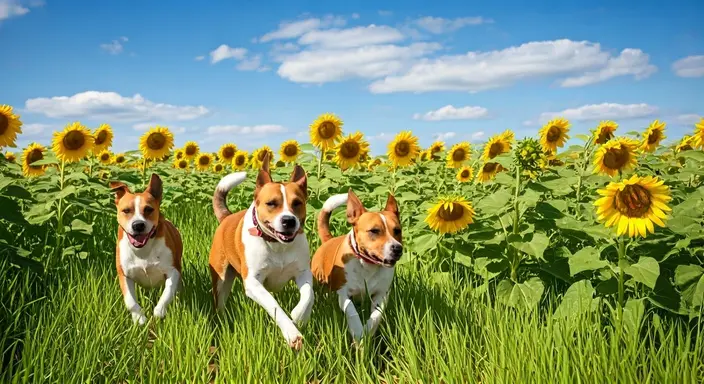
Grooming and Coat Care
The double coat of the Danish‑Swedish Farmdog offers protection against the elements but requires consistent maintenance to avoid matting and excessive shedding.
Grooming routine:
- Brushing – 2–3 times per week with a slicker brush to remove loose hair and prevent tangles.
- Bathing – Once every 6–8 weeks or as needed; use a mild, dog‑specific shampoo to protect skin oils.
- Ear Cleaning – Check weekly for debris; wipe gently with a cotton ball and a vet‑approved ear cleaner.
- Nail Trimming – Every 3–4 weeks; keep nails short to avoid joint strain.
- Dental Care – Brush teeth 2–3 times per week with a soft canine toothbrush and toothpaste.
Seasonal shedding peaks in spring and fall; a thorough brush during these periods reduces loose fur around the home. Regular grooming not only keeps the dog looking tidy but also provides an opportunity to check for skin issues, parasites, or injuries.
Nutrition and Feeding Guidelines
A well‑balanced diet fuels the Danish‑Swedish Farmdog’s active lifestyle and supports joint health, bright eyes, and a glossy coat.
Key feeding recommendations:
- High‑Quality Protein – Choose foods with named animal proteins (e.g., chicken, fish) as the first ingredient.
- Moderate Fat – 12–15 % fat supports energy needs without excess weight gain.
- Omega‑3 Fatty Acids – Adding fish oil or foods rich in DHA/EPA promotes joint health and reduces inflammation.
- Portion Control – Feed 2–3 meals per day for adults; adjust portions based on activity level and body condition score.
- Life‑Stage Formulas – Puppies require a growth formula; seniors benefit from joint‑support additives and lower calorie density.
Sample daily feeding guide (for a 20‑lb adult dog):
- Morning – ½ cup of dry kibble mixed with 1 Tbsp canned wet food.
- Evening – ½ cup of dry kibble plus a handful of fresh vegetables (carrots, green beans).
Always provide fresh water, and avoid feeding large bones, grapes, raisins, or foods high in sodium. Consulting a veterinarian for a personalized nutrition plan is especially advisable for dogs with health concerns such as allergies or hip dysplasia.
Living Environment: Home, Apartment, or Farm?
The adaptability of the Danish‑Swedish Farmdog makes it suitable for a range of living situations, as long as its exercise and mental stimulation needs are met.
- House with Yard – Ideal; the dog can enjoy supervised off‑leash time, dig, and explore while staying safe.
- Apartment (≥ 500 sq ft) – Works well if the owner commits to multiple daily walks, indoor games, and occasional trips to a dog park.
- Farm or Rural Property – The breed’s heritage shines here; ample space for herding drills, tracking, and field work keeps the dog fulfilled.
Regardless of setting, the Danish‑Swedish Farmdog requires at least 60–90 minutes of purposeful activity each day. Without this, the dog may become bored and develop destructive behavior. Providing interactive toys, puzzle feeders, and regular training sessions helps bridge any activity gaps in smaller living spaces.
Choosing a Danish‑Swedish Farmdog: Adoption, Breeder, or Rescue
Finding the right Danish‑Swedish Farmdog starts with clear expectations and responsible sourcing.
Steps to secure a healthy, well‑tempered companion:
- Assess Your Lifestyle – Confirm you can meet the breed’s exercise, training, and grooming requirements.
- Research Reputable Breeders – Look for members of recognized breed clubs; ask for health clearances (hip, elbow, eye).
- Visit the Facility – Observe the environment; puppies should be raised in a clean, social setting with exposure to people and stimuli.
- Consider Rescue Groups – Many Danish‑Swedish Farmdogs end up in shelters; rescues can match you with an adult dog that already has basic training.
- Ask the Right Questions – Inquire about the puppy’s lineage, vaccination record, and any known health issues.
After selection, schedule a veterinary check‑up within the first week and begin a gradual acclimation to your home routine. Proper early care sets the stage for a happy, lifelong partnership.
Puppy Care Essentials
Welcoming a Danish‑Swedish Farmdog puppy brings joy and responsibility. The first months lay the foundation for behavior, health, and social development.
Essential puppy‑care checklist:
- House‑Training – Use a consistent schedule; take the puppy out after meals, play, and naps.
- Vaccination Protocol – Follow the veterinarian’s five‑stage series (6‑8 weeks, 10‑12 weeks, 14‑16 weeks, booster at 1 year).
- Socialization – Expose the puppy to varied sounds, surfaces, people, and other vaccinated dogs during the critical 3‑14 week window.
- Basic Commands – Teach “sit,” “stay,” “come,” and “leave it” using short, fun sessions.
- Nutrition – Provide a high‑quality puppy formula; feed 3–4 small meals daily, adjusting portions as the puppy grows.
Monitoring weight gain, dental development, and energy levels helps catch potential health concerns early. With patience, consistency, and plenty of love, your Danish‑Swedish Farmdog pup will grow into a confident, well‑behaved adult.
FAQs
Are Danish‑Swedish Farmdogs good for first‑time dog owners?
Yes. Their intelligence and eagerness to please make training straightforward, and their moderate size fits well in most homes. New owners should commit to daily exercise and consistent socialization.
How much grooming does a Danish‑Swedish Farmdog need?
Regular brushing 2–3 times a week, occasional baths, and routine ear, nail, and dental care keep the coat healthy. Grooming sessions also double as health checks.
Do they get along with cats?
Generally, yes. Early, supervised introductions and positive reinforcement help the Danish‑Swedish Farmdog view cats as part of the family rather than prey.
What is the average lifespan of a Danish‑Swedish Farmdog?
When cared for properly, they live 12–15 years. Maintaining a balanced diet, regular vet visits, and adequate exercise contribute to longevity.
Can the breed thrive in an apartment?
Provided the owner supplies at least an hour of vigorous activity daily and mental stimulation through training, games, and puzzle toys.
Conclusion
The Danish‑Swedish Farmdog blends a rich working‑dog heritage with a vibrant, affectionate personality, making it an ideal partner for active individuals and families.
Its compact size, keen intelligence, and loyalty shine brightest when paired with regular exercise, structured training, and ample social interaction.
By understanding the breed’s history, physical traits, health considerations, and daily care needs, you can provide a thriving environment that honors its farm‑dog roots while fitting modern lifestyles.
Start with a reputable source—whether a breeder, rescue, or adoption agency—and commit to a routine of physical activity, mental enrichment, and preventive health care.
With these steps, you’ll enjoy a lifelong companion that eagerly joins every hike, game, and adventure you embark upon.


